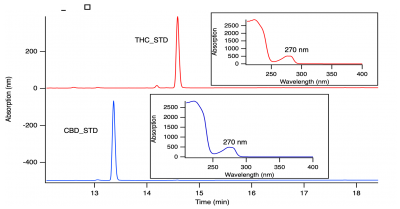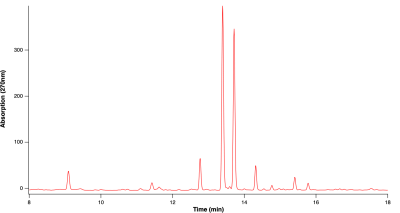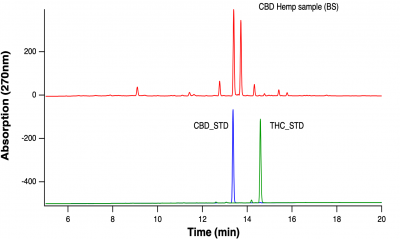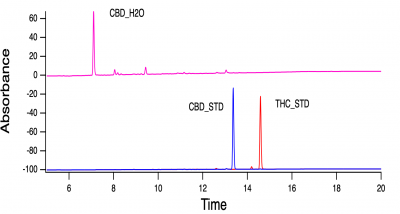Cannabis Research
The following document was completed by R. Connor Graeff in Spring of 2021 in partial fulfillment of his requirements for a Bachelor's Degree of Arts in Chemistry, Monmouth College, Monmouth, Il 61462. The research was done under the supervision of Bradley E. Sturgeon.
Analytical Testing of Cannabis
Introduction
Importance of Cannabis Research
- The importance of Cannabis Research is that we need to recognize the increasing diversity of cannabis products and their expand uses. Recognizing the increasing use of cannabis material and the legalization of the recreational use of cannabis unlocked the door for labs to start doing more research on cannabis. Also, farmers growing hemp material need analytical research done on their plant material because of laws and regulations set on cannabis. The farmers need to have their hemp material below 0.3 WT% of delta 9 THC otherwise it is considered marijuana. With that being said if a farmer has their hemp field above that percentage then they have a bunch of marijuana on their hands and that can cause multiple problems. Analytical testing is also important because the consumer needs to know what is in the products that are being sold. The consumers need to have confidence in the label on the material that when there is suppose to be a certain percentage of CBD in the product that they are getting that percentage.
Structures of Cannabinoids
| THC | THCa |
 |

|
| CBD | CBDa |
 |
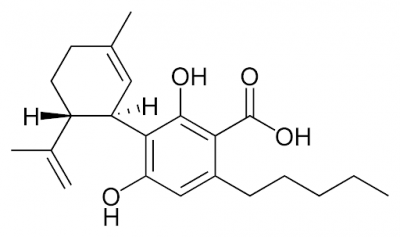
|
- Figure 1: Webmo calculation Hartree fox (Molecular Orbitals - Gaussian)
| CBDa | THC |
 |
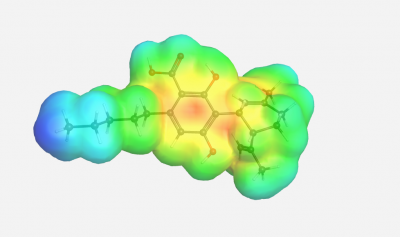
|
- Figure 2: Wembo calculation Hartree Fock (Molecular Orbitals - Gaussian)
Method
- Cannabis plant material is collected with cannabinoids present in the sample. The sample is then manicured and grinned up by the Kozo grinder and then placed into a glass jar. The cannabis material is then weighed out to 0.1 grams or a 100mg on an analytical balance. The plant material is then placed into a falcon tube and 5mL of methanol is added to the tube. The falcon tube is then placed on the shaker for 30 minutes at the max RPM. After the shaking is finished the liquid material inside the tube is extracted out of the tube using a filter syringe. The filter is then placed on to the syringe and the sample is then added into a HPLC sampling vial. The sample is now placed on the HPLC sampler along with the correct standards.
Data
- Figure 3: Standards of CBD and THC along with the lambda max of both cannabinoids
- Figure 4: CBD sample from Galena IL
- Figure 5: CBD Sparkling water ran with both standards (CBD and THC)
- Figure 6: Galena CBD sample ran with both standards (CBD and THC)
Discussion
In the sample that was tested it was known that there where about eight cannabinoids present in the sample. That assumption is backed by the eight peaks located on the chromatogram. However, we could not confirm what cannabinoids were present in the sample. There are about 20 different cannabinoids that could be present in the sample and they can match up with literature suggesting that it might be one of the 20. However, it is not sure which one is which because they can elute off the column around the same time. This brings up the question "what is in the sample". This specific sample stated that there was 20% CBD present. This data drove the research goal to find out what was specifically present in the sample.
Results
The sample from Galena IL was tested with the two standards that was collected from sigma. The two standards have sharp and prominent peaks and can be ran with the sample to see if the peaks from the standards aline with the peaks from the sample. During the data collection it is observable on the graph that one of the peaks from the standards is alined with the peaks from the sample material. The CBD standard matched with one of the peaks from the sample. However, the THC standard did not match with any of the peaks. Therefore, CBD is present in the sample but THC is not present. This is good because the sample that was analyzed was supposed to have CBD present and there was supposed to be no THC present. However, there are about eight other smaller peaks that can be seen on the graph. Therefore, we can conclude that CBD is present in the sample that was analyzed. The second data set shows the two standards that where ran with the sparkling water contains CBD. In this graph we can see that there is one prominent peak located from the sample. Therefore, something is present in the can. However, it is not CBD or THC because the peak does not aline with the standard peaks.
Conclusion
The sample that was analyzed had CBD present. However, it also had many other cannabinoids present in the sample. To know specifically what other cannabinoids are located in the sample further data analysis needs to be done. Also, more standards need to be obtained to have reference with the sample. There are many different samples that can be analyzed through analytical testing and it is important to do this research because of the new laws and regulations that are continuing to pass throughout the United States. Years down the road Cannabis Data Analysis could be one of the largest researched topic.
Future Directions
In the future, decarboxylation of CBDa to CBD would be an interesting project/research goal. This could be a more focused research topic and also a more difficult task to accomplish.
Literature Reference
History of this Document
The data presented was done in conjunction with Alec Hayes and R. Connor Graeff. This wiki document was mainly authored by RC Graeff (May 2021).
